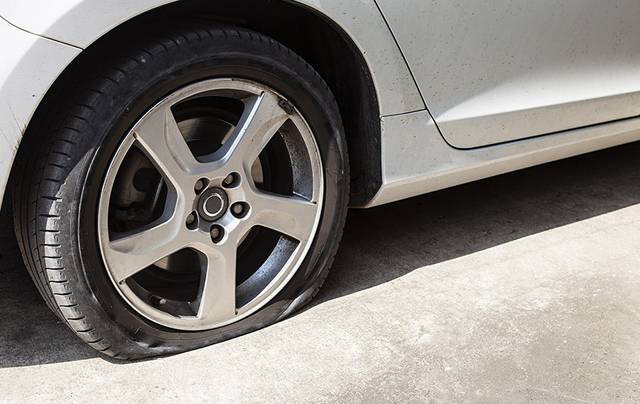Need a Tyre Going Flat Inspection ?
Get roadside assistance or find specialists near you.

Australia's #1 booking site for car services & car repairs
Book now, pay later Interest-free payments
Transparent prices no surprises

*Available at select service providers. T&Cs apply.
Average rating for Tyre going flat inspection
4.9 • based on 28 reviews of 27 businesses
Tyre Going Flat Inspection
What Is A Flat Tyre?
There’s a weird repetitive ‘thud thud’ sound as you’re driving, but you keep going regardless, wondering what it could be.
Then you feel the steering wheel pulling to one side and notice a corner of the car seems lower than normal. Hmmm, time to pull over.
Yip, you have a flat tyre. But why?
They are brand new and were fine when you left for work this morning.
Why now, when you’re in the middle of peak-hour traffic?
Here are some reasons why tyres can go flat, and you might be surprised that it’s not always the fault of the tyre alone.
You might be able to reduce your chances of deflating surprises at the most inconvenient times.
If you do experience a flat tyre, or have a tyre that has a slow leak, a tyre specialist can help.
A tyre inspection will likely cost between $10 and $50.
If the technician finds a leak and can repair the tyre, you may be charged between $20 to $80 to plug the hole – a job that will take about 30 minutes to complete.
How Does A Tyre Work?
A tyre is the only part of the car that touches the road and, as such, is designed to not only provide traction and grip to make driving safer, but to also act as a cushion, absorbing impacts from rough surfaces and protecting your wheels.
A tyre needs to withstand the weight of the vehicle whilst still having the strength to keep its form and function.
If asked, most people will say a tyre is made of rubber.
That’s true, sort of, but the rubber is mixed with other elements including fabric, wire and various chemical components and compounds.
The different combinations of these elements, construction designs, and the design of other features such as the tread pattern, allow for tyres to be created in many different sizes and to many different driving requirements – from highway to off road use, from trucks to urban runabouts.
The tread is the part of the tyre in contact with the road.
It wears down over time and is the main reason why we end up having to replace tyres.
Treads come in various patterns and each is specially designed to offer excellent stability, braking, cornering, wear life, resistance, traction, grip, wet weather driving or handling icy conditions.
Tyres are fitted to wheels (often made from steel or aluminium), which are attached to the axles and drivetrain of a vehicle.
For them to function, they are filled with air set to a specific pressure that helps deliver optimal performance and tyre wear.
Air is delivered into the tyre through a valve stem and the pressure should be checked regularly.
A common reason for a flat tyre is when its body has been punctured by a sharp object - a screw or nail, for example. However, there are other reasons you can encounter a flat tyre.
Common Reasons For Tyres Going Flat
- Leaky valve stem
- Wheel leak
- Hole in the tyre
- Puncture
- Worn tyre/uneven wear
- Bead leak
- Blowout
- Someone let your tyres down
- Tyre over inflation
- Hitting potholes/speed humps at speed
It’s good to know that some punctures can safely be repaired without compromising the tyre.
However, some punctures can’t be fixed and do compromise the tyre integrity - when the sidewall is punctured, for example.
In these cases, the tyre will be deemed unrepairable and you’ll need a new one.

How Is A Flat Tyre Inspection Performed?
- Technician will probably ask when you noticed the leak and how long you have been driving with it
- They will visually inspect the tyre, looking for obvious punctures whilst also checking tyre wear, the valve and the wheel
- The tyre may be removed from the vehicle
- If there are no obvious puncture signs, they might spray the tyre with soapy water or drop it into water, to identify a leak.
- Leaks may be marked
- They will discuss with you the reasons for the leak, if it is repairable, and the costs of repair